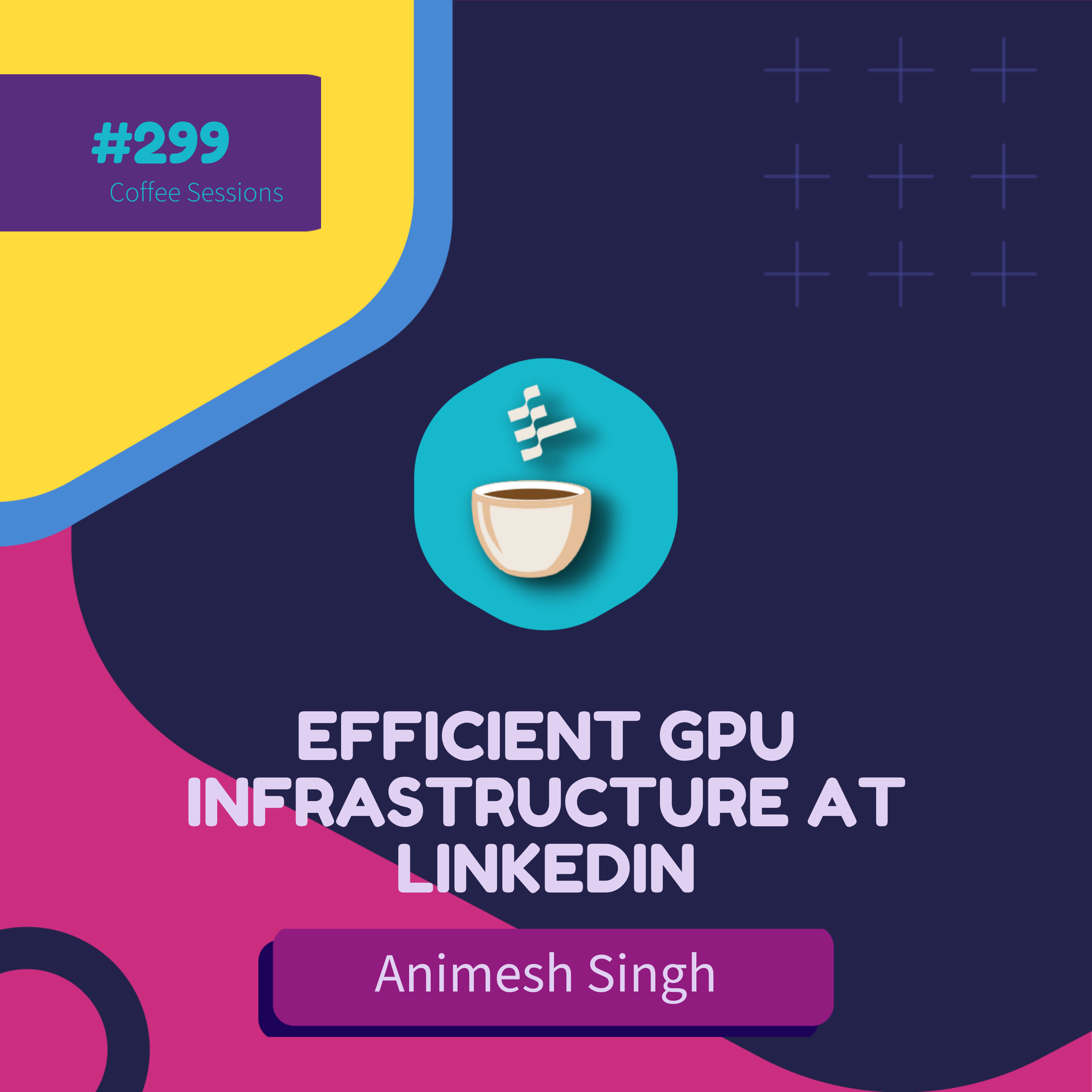
Efficient GPU infrastructure at LinkedIn // Animesh Singh // MLOps Podcast #299

MLOps.community
Deep Dive
- LLMs power features like profile summarization and hiring assistants.
- Personalized recruiter emails see increased candidate response rates.
- LinkedIn is developing agent infrastructure for various applications.
Shownotes Transcript
Building Trust Through Technology: Responsible AI in Practice // MLOps Podcast #299 with Animesh Singh, Executive Director, AI Platform and Infrastructure of LinkedIn.
Join the Community: https://go.mlops.community/YTJoinIn Get the newsletter: https://go.mlops.community/YTNewsletter
// AbstractAnimesh discusses LLMs at scale, GPU infrastructure, and optimization strategies. He highlights LinkedIn's use of LLMs for features like profile summarization and hiring assistants, the rising cost of GPUs, and the trade-offs in model deployment. Animesh also touches on real-time training, inference efficiency, and balancing infrastructure costs with AI advancements. The conversation explores the evolving AI landscape, compliance challenges, and simplifying architecture to enhance scalability and talent acquisition.
// BioExecutive Director, AI and ML Platform at LinkedIn | Ex IBM Senior Director and Distinguished Engineer, Watson AI and Data | Founder at Kubeflow | Ex LFAI Trusted AI NA Chair
Animesh is the Executive Director leading the next-generation AI and ML Platform at LinkedIn, enabling the creation of the AI Foundation Models Platform, serving the needs of 930+ Million members of LinkedIn. Building Distributed Training Platforms, Machine Learning Pipelines, Feature Pipelines, Metadata engines, etc. Leading the creation of the LinkedIn GAI platform for fine-tuning, experimentation and inference needs. Animesh has more than 20 patents and 50+ publications.
Past IBM Watson AI and Data Open Tech CTO, Senior Director, and Distinguished Engineer, with 20+ years experience in the Software industry, and 15+ years in AI, Data, and Cloud Platform. Led globally dispersed teams, managed globally distributed projects, and served as a trusted adviser to Fortune 500 firms. Played a leadership role in creating, designing, and implementing Data and AI engines for AI and ML platforms, led Trusted AI efforts, and drove the strategy and execution for Kubeflow, OpenDataHub, and execution in products like Watson OpenScale and Watson Machine Learning.
// Related Links